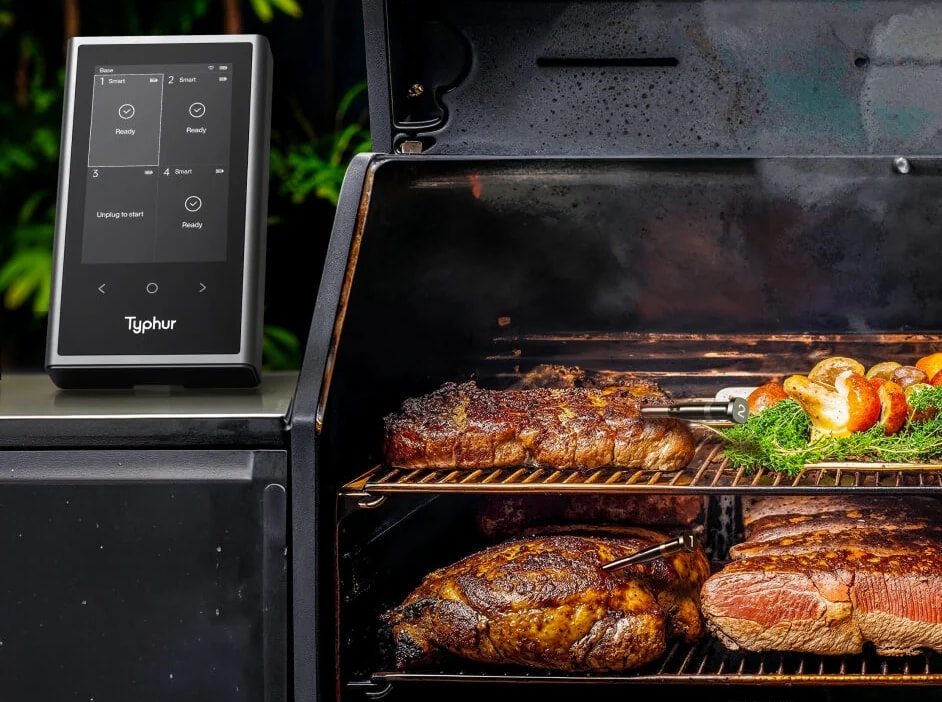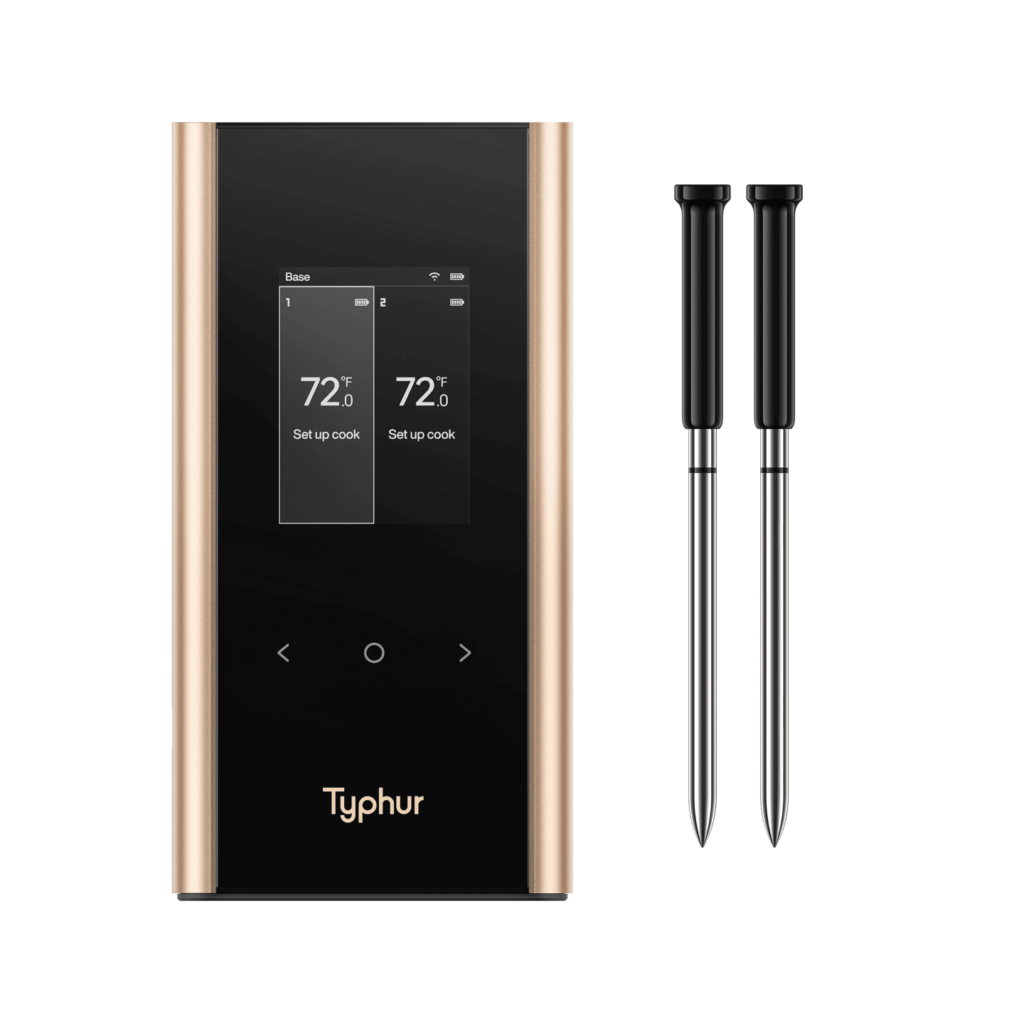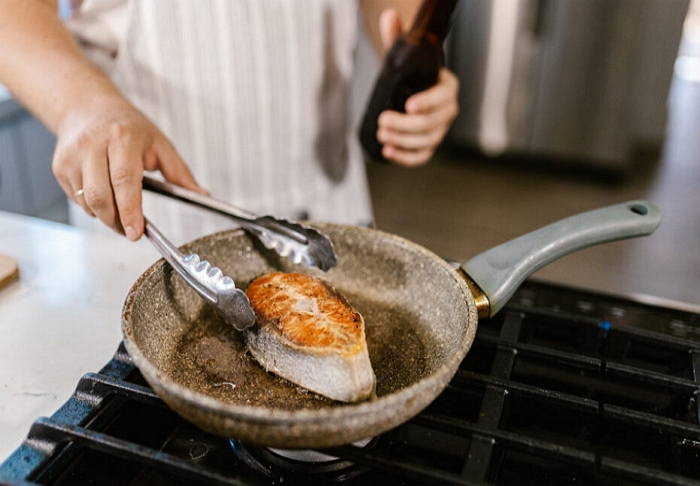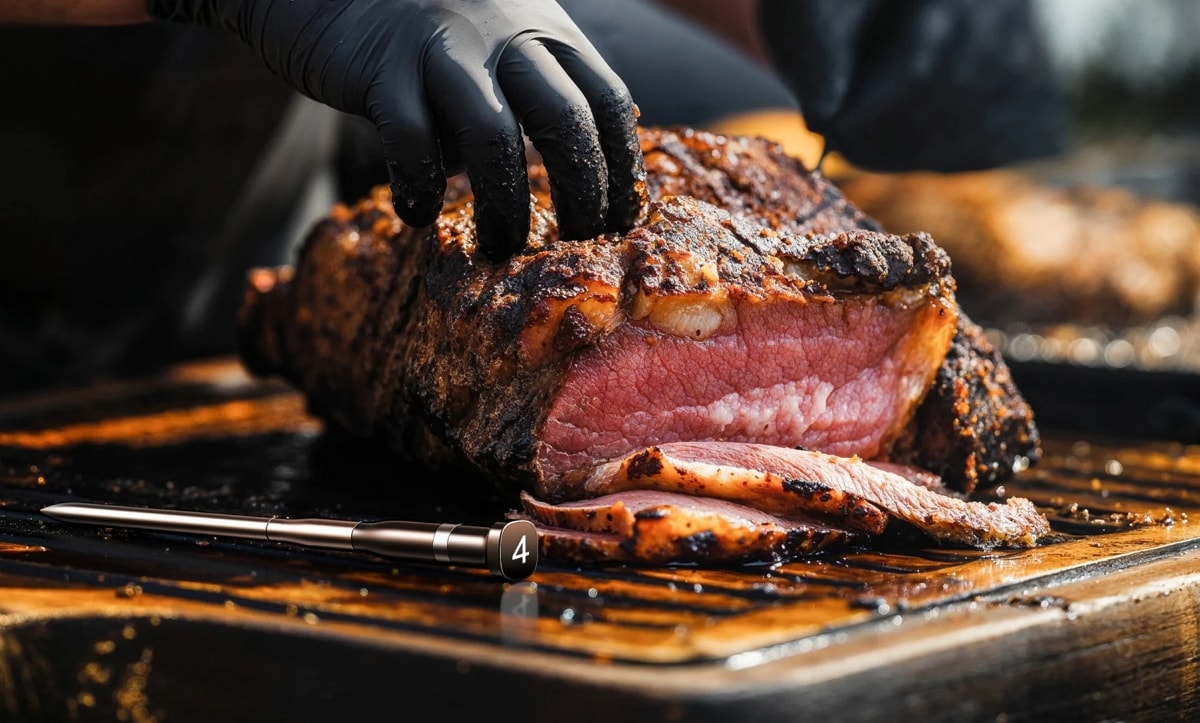Have you ever stood in your kitchen and thought, “Could my meat thermometer be used for candy, too?” or “Is a candy thermometer just the same as a meat thermometer?” Well, you are not the only one. Several home cooks have been confused by the fine differences between these two otherwise crucial tools. In effect, the design, temperature ranges, and precision of these two are made to cater to tasks of very different nature. Pick the wrong one, and you end up with an undercooked steak, or worse, burnt sugar.
In this guide, we will explore the general usage of each thermometer, its basic differences, and the criteria for selecting one for a specific task. We will also point you toward the Typhur meat thermometer, a smart choice for ensuring meat perfection every time.
Table of contents
What is a Candy Thermometer?
A candy thermometer is essentially a thermometer made for sugar work and high-temperature liquids, such as caramel, fudge, and deep-frying.

Key features:
- High Temperature Range: Most candy thermometers run from 100°F to 400°F and above (38°C to 204°C), so that any stage, such as soft ball, hard crack, or caramel, can be reached.
- Heat Resistant: Made to withstand direct contact with boiling sugar or oil without warping.
- Design: Usually comes with a clip to fasten it to a saucepan, a long probe to keep one’s hands away from heat, and a bright-colored analog dial for easy viewing.
Candy thermometers focus on precision in high-temperature settings; that is vital in sugar work: one degree off, and your caramel could seize or burn.
What is a Meat Thermometer?
A meat thermometer is a kitchen tool to measure the internal temperature of meat, poultry, and fish to ensure that it is safe to eat and appropriately cooked. Unlike cooking by the way of sight or timing, a meat thermometer gives a precise reading, so no undercooking or overcooking takes place.

Key Features:
- Probe Design: Most meat thermometers consist of a long, thin metal probe that easily penetrates the thick cut of meat. The probe is usually pointed to reach the center of the meat without tearing or compressing it.
- Temperature Accuracy: They get calibrated to accurately read the temperatures at which most proteins are usually cooked, between 32°F and 212°F (0°C–100°C).
- Digital or Analog Display: They may be analog (dial-based) or digital. Analog thermometers just do their job since the design is enough, while digital thermometers, apart from providing much faster readings, sometimes have other features, such as timers or presets for different temperatures.
The thermometer takes away guesswork from your cooking, giving you security, precision, and flavor. By accurately measuring the internal temperature, the average cook can achieve perfect consistency, whether it is a juicy roast, tender chicken, or thick-cut steak.
Candy Thermometer vs Meat Thermometer: Main Differences
Is a candy thermometer the same as a meat thermometer? Both tools measure temperature, but their design, accuracy, and intended use make them different. Understanding the differences will ensure food safety and cooking perfection.
1. Temperature Range
One of the main points of difference between a candy thermometer and a meat thermometer is the temperature range.
- Candy Thermometers: Usually used for very high-heat processes such as boiling sugar, caramel, or syrup, a candy thermometer generally goes from about 100°F up to 400°F (38°C–204°C), or possibly higher. This temperature range is necessary to keep track of the cooking stages of sugar, including soft ball, hard crack, caramelization, etc.
- Meat Thermometers: These are lower temperature measuring devices, ranging between 32°F and 212°F (0°C and 100°C), within the safe cooking temperature range for poultry, beef, pork, and fish. If you try to use a meat thermometer for candy, you may find that it cannot withstand the heat or may give inaccurate readings.
Key takeaway: You cannot usually use a meat thermometer for candy, but a candy thermometer is just too much for most meats.
2. Design and Build
The construction of these two thermometers reflects their respective uses:

- Candy Thermometers: Usually, they are long, and they have a clip to attach them to a saucepan; sometimes, they are even marked for different stages of sugar. They are supposed to endure constant high temperatures without warping.
- Meat Thermometers: They generally have a pointed probe to enter the meat without damaging its fibers, sometimes a longer handle, or a digital readout. The design ensures minimal heat loss and rapid readings on thick cuts of meat.
3. Accuracy and Precision
Accuracy has quite different requirements for candy and meat thermometers:
- Candy Thermometers: Sugar scalding has to be controlled within 1-2°F, since any deviation from this might create candy with the wrong texture.
- Meat Thermometers: While precision is important, it may be given a little broader; for example, a roast or brisket is safe and delicious within a few degrees of the target temperature.
4. Digital vs Analog
Both digital and analog varieties are found in all thermometer types, but often the choice depends on the method used for cooking:
- Digital Candy Thermometers: These provide quick, exact readings for recipes that require precise control.
- Digital Meat Thermometers: Equipped with timers, preset temperatures, and sometimes wireless capabilities, they allow a cook to monitor the meat from a distance without having to open the oven or smoker.
5. Practical Considerations
- Using a Candy Thermometer for Meat: Technically possible for low-temperature meats. However, it really is cumbersome, as it was not made to probe thick cuts.
- Using a Meat Thermometer for Candy: Not a good idea. Meat thermometers often cannot withstand sugar’s extreme temperatures and can lead to inaccurate readings, potentially causing burnt or even undercooked candy.
Basically, knowing the difference between a candy thermometer and a meat thermometer is essential for kitchen safety, along with its respective success; each has found purpose: the candy thermometer for high-heat sugar work and the meat thermometer for perfectly cooked meat.
Choosing the Right Thermometer for Your Cooking
Choosing an accurate thermometer is necessary for safe and accurate cooking.
- Cooking Task: Use a candy thermometer for sugar work like caramel or fudge, which withstands higher heat and can measure with exactness the various sugar stages. A meat thermometer must be used with roasts, chicken, pork, or fish to maintain safe internal temperatures.
- Type & Accuracy: An analog thermometer is simple and very sturdy. In essence, the digital ones offer an almost instant, precise measurement. Candy thermometers must consider tight accuracy for sugar, whereas the meat ones cover temperature standards used in safe cooking.
- Features: Digital meat thermometers may be programmable with preset alarms or wirelessly connect to other devices. Meat probes are designed to penetrate thick cuts; candy thermometers clip to pots for consistent monitoring.
Typhur Meat Thermometer: Precision, Wireless & Smart Cooking

Perfect cooking requires the correct meat thermometer, and this is what changes the shape of the game for you. Typhur Sync Gold Dual terminates the guesswork from your kitchen and grants you the confidence to cook briskets in smoke, pork in a roast, or chicken on a grill. It is for the home cook or BBQ enthusiast who desires professional precision without hassle.

Long Range Wireless Meat Thermometer
- Wireless and Long-Range: Keep control of your cooking from a distance of 100 ft anywhere about grills, smokers, or ovens!
- Dual Probes: With dual channels available, two pieces of meat may be simultaneously monitored, or the temperature of the meat and the oven may be tracked at the same time so that the nice ones are worked out every time.
- Smart App Alerts: The Typhur app will notify you when to wrap the brisket or when the roast is resting, in addition to alerts for your meat reaching the target temperature.
- Reliable and Accurate: The Sub-1GHz wireless connection prevents interference to keep your readings stable even in long smokes or roasts, and you get reliable, accurate temperatures throughout.
Whether it’s brisket, pork, or chicken, this thermometer guarantees accurate cooking, helping you cook juicy, perfectly cooked meat every time.
FAQs About Candy vs Meat Thermometers
No. Candy thermometers can handle higher temps and are designed for sugar work. Meat thermometers are for moderate temps and internal meat readings.
No. Meat thermometers may not be able to withstand high sugar temps and will give you bad readings and ruin your candy.
Yes, most meat thermometers work for liquids as long as the temp doesn’t exceed the probe’s max limit.
Use the ice water test (should read 32°F/0°C) or boiling water test (should read 212°F/100°C at sea level). Digital thermometers may need to be recalibrated if they’re off.
Summary
Candy and meat thermometers may look the same, but they are used for very different things. Candy thermometers are great for high-heat sugar work, and meat thermometers are great for low to medium heat for perfectly cooked proteins. Using the right tool prevents cooking disasters and ensures great results.
For smart, precise cooking, especially with meat, the Typhur Sync Gold Dual has wireless connectivity, dual probes, and app alerts; it’s a must-have for any kitchen.




